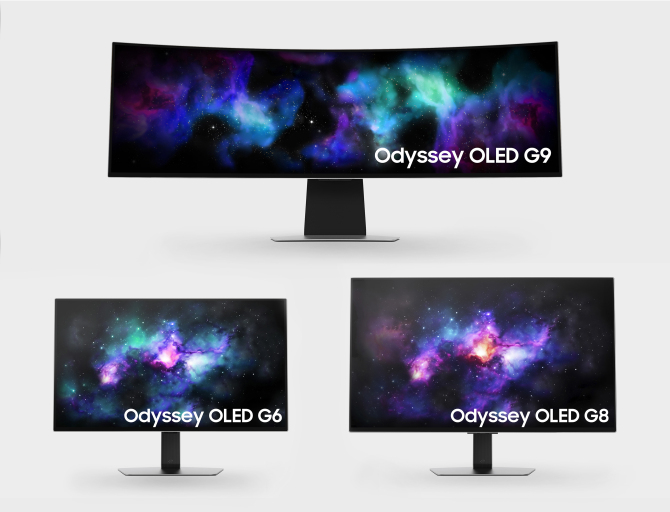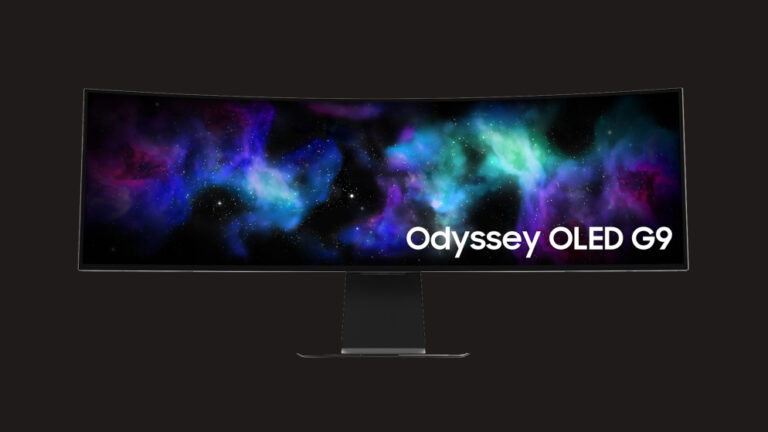It appears that 2024 will be the year that OLED becomes widely available, at least for games.
OLED gaming displays were comparable to high-end graphics processing units (GPUs) a year ago; they were not very affordable, they were not necessarily necessary, and they were also kind of new-fangled in the sense that gamers were asking themselves, “Do I really need one?” However, this view is likely to shift in the year 2024, as it is anticipated that more OLED monitors will be available in a variety of forms and sizes. This will also contribute to the reduction of prices and provide gamers with other options that are not limited to “huge” and “expensive.”
Samsung is one of the first firms to introduce a new OLED gaming monitor range. In preparation for the Consumer Electronics Show (CES) that will take place the following week, the company has shown three new OLED gaming monitors for gamers. The new monitors that the firm has released are all members of its Odyssey family. These monitors feature extremely fast refresh rates and a technology that the company refers to as “glare-free” OLED, which is sufficient to explain what it is. There are three displays in total: the G9, which is an ultra-wide and curved monitor, and the G8 and G6, which are both regular flat panels.

The G9 and G8 displays share a number of characteristics, despite the fact that their sizes and resolutions are very different from one another. The monitor known as the G9 is an ultra-wide, curved display that has a resolution of 5,120 by 1,440 pixels and an aspect ratio of 32:9. Its panel is a staggering 49 inches. Both of the displays have a refresh rate of 240Hz, and the G8 is a 32-inch flat panel with a resolution of 3,840 by 2,160 pixels. Additionally, the aspect ratio of the monitors is 16:9. Both panels also come equipped with a feature that Samsung refers to as “Multi Control,” which enables them to be associated with a Samsung phone or tablet in order to facilitate the direct transfer of text and images, much like Apple’s AirDrop. It may sound strange, but both monitors come with a “SmartThings Hub” that allows users to connect Internet of Things devices.
In conclusion, there is the G6, which measures 27 inches and is the smallest of the three. Additionally, it is a flat panel, just like the G8, and it has a resolution of 2,560-by-1,440 pixels and a 16:9 aspect ratio, but it has a refresh rate of around 360Hz. It is refreshing to find a high-refresh gaming monitor that is not 1080p, and this display is designed to cater to gamers who compete in eSports and competitors in other gaming competitions.
All three monitors are compatible with VESA DisplayHDR True Black 400, which is a more subdued version of high dynamic range (HDR), but the manufacturer claims that it offers vivid visuals. Additionally, they all include AMD FreeSync Premium Pro rather than Nvidia G-Sync, which appears to be the new standard because it reduces expenses while still providing tear-free gameplay. This is the main difference between the two. In addition, they include a USB hub, two HDMI 2.1 ports, and a DisplayPort 1.4, which makes it a fairly common specification.
Due to the fact that the official release does not include any information regarding pricing or availability, additional information will be disclosed at the trade show. As OLED monitors become the dominant technology in the industry (with artificial intelligence, of course), Samsung will undoubtedly be joined by other display firms such as LG, Alienware/Dell, and Asus.

